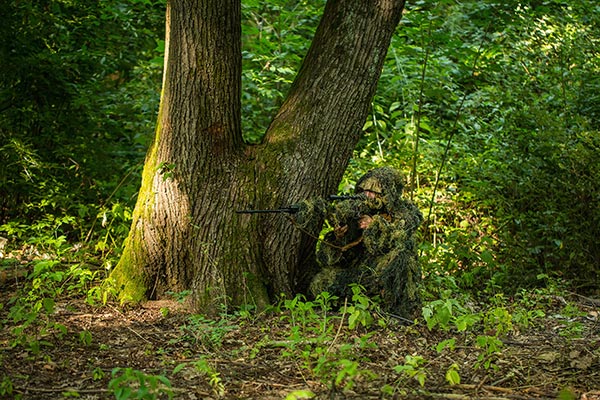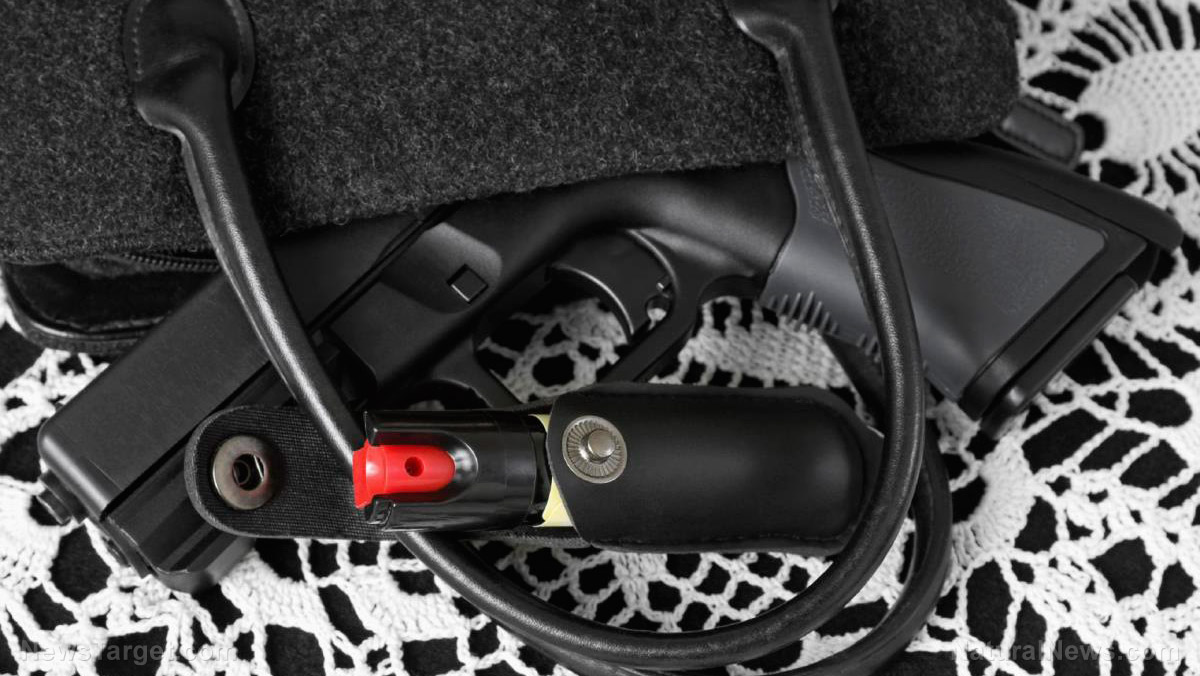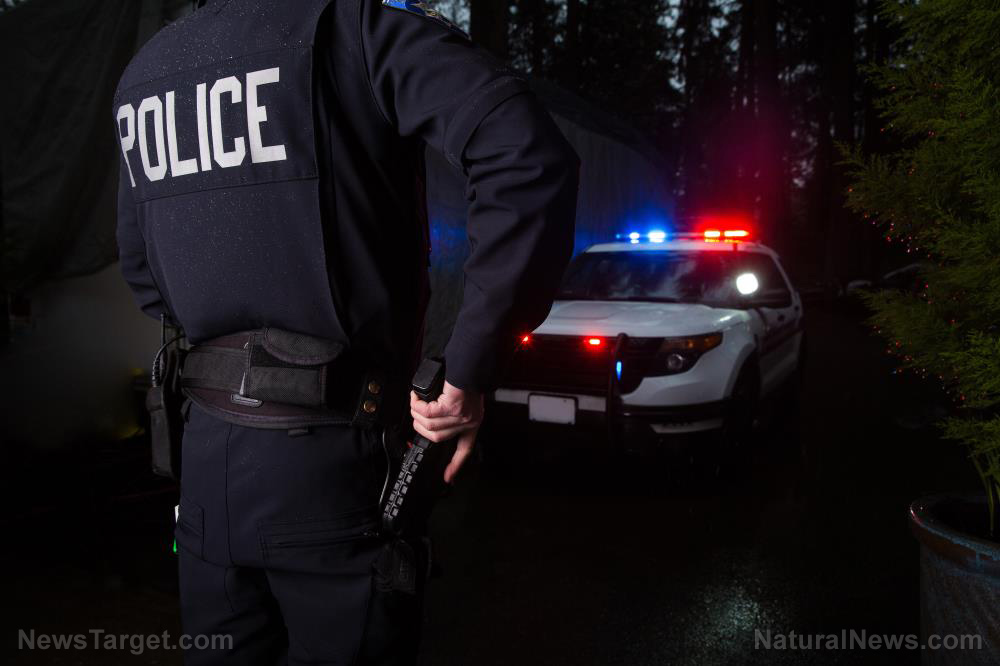Prepper safety tips: 10 Ways to protect your home from intruders
05/27/2022 / By Zoey Sky

Before SHTF, you need to improve your home security to protect your loved ones from trespassers or intruders. There are many ways to keep your home safe, such as setting up an alarm system, putting up fencing or getting a guard dog. (h/t to NewLifeOnAHomestead.com)
Detailed below are 10 ways to protect your home and family from various threats.
Install sturdy fencing around your property
Fencing helps deter intruders from your property. Having a well-constructed fence means you have a physical barrier that is difficult or noisy to penetrate, making it less likely that someone will attempt to trespass on your homestead.
Fences can also keep out wild animals on your property. (Related: Home security: 3 Ways to protect your homestead.)
Add barbed wire or razor wire to the top of your fencing
Once your fencing is set up, you might want to add barbed wire or razor wire on top for added security. Both types of wire have sharp prongs or blades that can snag or cause serious injury, and they are typically installed in strands or coils atop fences or walls.
Set up an alarm system that alerts you when triggered
One of the most fundamental security systems is an alarm. Whether you live on a small farm or a large homestead in the countryside, alarms will help improve your home security.
You can get silent alarms or loud ones that best suit your security needs.
A silent alarm will make a noise that only you can hear via a notification on a device or an alert at a monitoring station. This can give you enough time to arm yourself before you investigate or call the police.
Meanwhile, an audible alarm will make a loud noise that will alert you and the trespasser, potentially scaring them away without the need for a confrontation.
Place motion lights and sensors around the property
Motion-activated lights are a popular choice because they only turn on when someone is present. This can help save on energy costs.
Illuminating your entire perimeter will be expensive and wasteful if you or someone on your property is not around to observe it, so use sensors and place motion lights at appropriate crossings or entry points that you can see from your home.
Plant defensive plants around the perimeter of your property
Thorny plants are a great option if you prefer a method of home security that doesn’t require monitoring.
Plant cacti or thorny bushes along the perimeter of your home, such as under windows and near doors, to impede trespassers who might try to break in.
Dig ditches around the perimeter
This option isn’t for everyone, but consider digging a ditch around the perimeter of your homestead if you would also want to control water and prevent flooding if it is common in your area.
As a bonus, ditches can also prevent vehicles, especially large vehicles that could be used to tow away equipment or trailers loaded with stolen supplies or animals.
Dig a wide, reasonably steep ditch to block most motor vehicles except the most capable trucks or four-wheel drives. The ditch should be at least six feet wide and three feet deep from the adjoining surface with sharply embanked sides of at least a 45-angle grade to stop larger vehicles.
Set up observation points
If your property is larger than the average home, you may need to set up several observation points so you or a family member can more easily survey your land and identify any approaching hostile company.
Whether you set up an elevated tower or a partially buried and concealed bunker, make sure that they are comfortable and that they give the person using it a good field of view of the targeted area.
Install anti-kick devices and window films
Home security goes beyond alarms and locks. Because forcible entry is one of the most common ways that intruders gain access to homes, try to stop the entry from happening in the first place.
Before SHTF, reinforce your doors and windows against kicks and shattering using anti-kick devices that can be quickly and easily installed on doors and door frames to reinforce them against kicks and rams.
To secure windows, use shatter-resistant window films to hold glass together or keep them in place if someone tries to break in through a window.
Get a guard dog
Dogs are often used to deter burglars and intruders. When trained and raised well, dogs can be loyal and protective.
Larger breeds can have genuine defensive value if a situation turns violent. However, before you decide to get a dog for this purpose, make sure you get the right breed that can help protect your family and guard your property.
Avoid small breeds like Chihuahuas and Yorkshire Terriers because they’re too small to effectively scare off intruders on their own.
Once you decide on a dog breed, make sure your pet is properly trained. This training should include basic obedience commands as well as specific commands for protecting your home and grounds.
Here are some of the best guard dog breeds for added home security:
- Akita
- American Staffordshire terrier
- Appenzeller sennenhund
- Belgian Malinois
- Boxer
- Caucasian shepherd
- Doberman pinscher
- German shepherd dog
- Tibetan mastiff
Develop a good relationship with your neighbors
You can also improve your own security situation by developing a good relationship with your neighbors. If you all look out for each other, intruders and burglars would have a hard time breaking into your homes.
Befriend your neighbors and let them know that you will keep an eye out for any suspicious activity and report it if they can help do the same for you.
There are lots of ways to develop this trust with your neighbors. Start a genuine neighborhood watch program, or get to know your nearest neighbors better so you’ll both know when something isn’t right so you can alert each other.
You should also get to know your local law enforcement officers so they can help you if SHTF. Consult them and they can help give you advice on home security, local threats and incidents.
Before disaster strikes, improve your home security with an alarm system or get a guard dog. Taking these extra precautions will help protect your family and property from intruders and thieves.
Watch the video below for tips on how to choose the best home defense gun.
This video is from the TopGunsWorld channel on Brighteon.com.
More related stories:
Home security tips: Top 12 defensive plants that can help deter trespassers.
Protect your property with these natural and man-made barriers, fences and fortifications.
The 7 best dog breeds for survival and protection.
A guide to securing your homestead’s perimeter (while observing the law).
Sources include:
Submit a correction >>
Tagged Under:
crime prevention, Home Defense, Home invasion, home security, homesteading, off grid, preparedness, prepper, prepping, self-defense, SHTF, survival, Survival Tips
This article may contain statements that reflect the opinion of the author
RECENT NEWS & ARTICLES
COPYRIGHT © 2018 SELFDEFENSE.NEWS
All content posted on this site is protected under Free Speech. SelfDefense.news is not responsible for content written by contributing authors. The information on this site is provided for educational and entertainment purposes only. It is not intended as a substitute for professional advice of any kind. SelfDefense.news assumes no responsibility for the use or misuse of this material. All trademarks, registered trademarks and service marks mentioned on this site are the property of their respective owners.




















